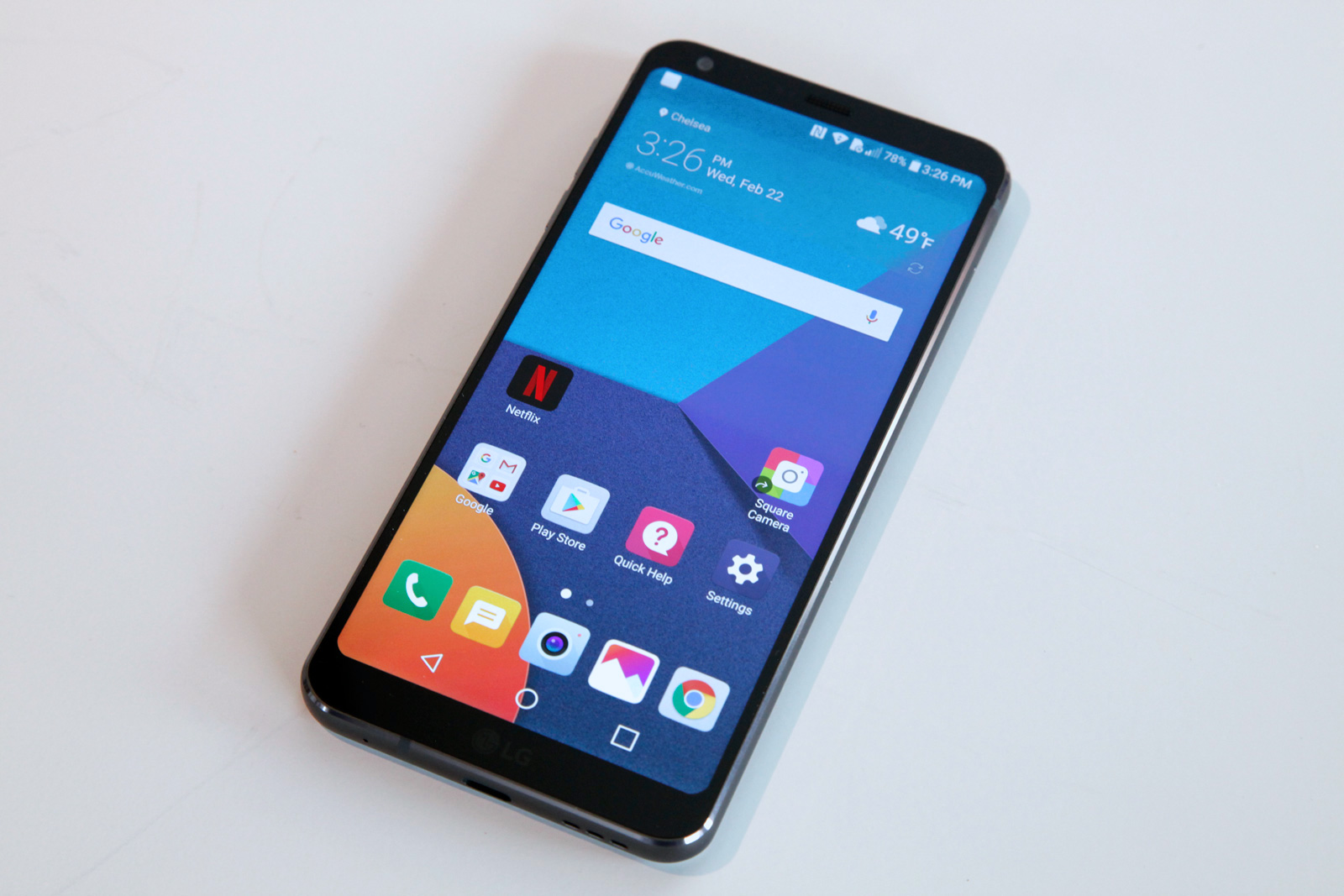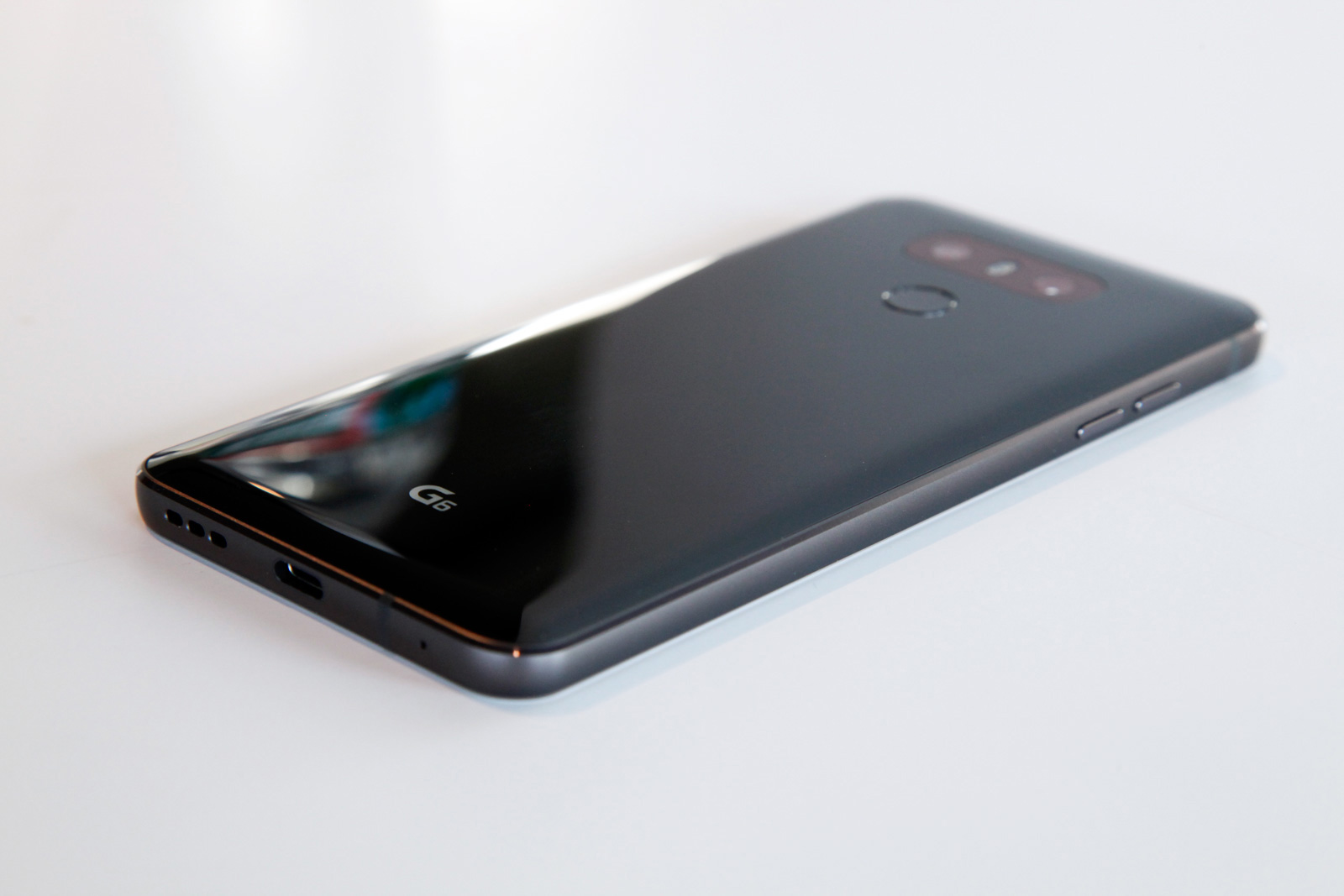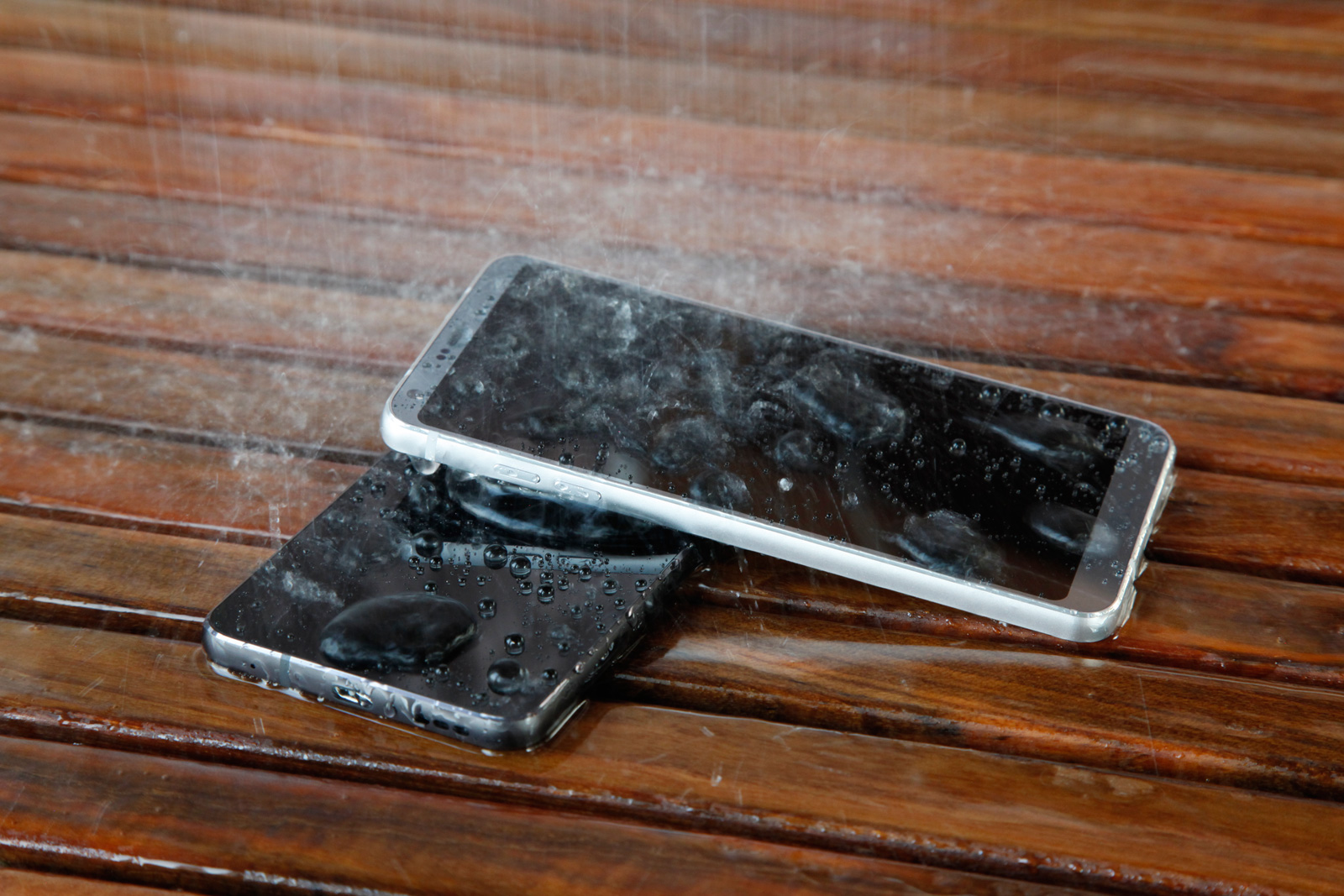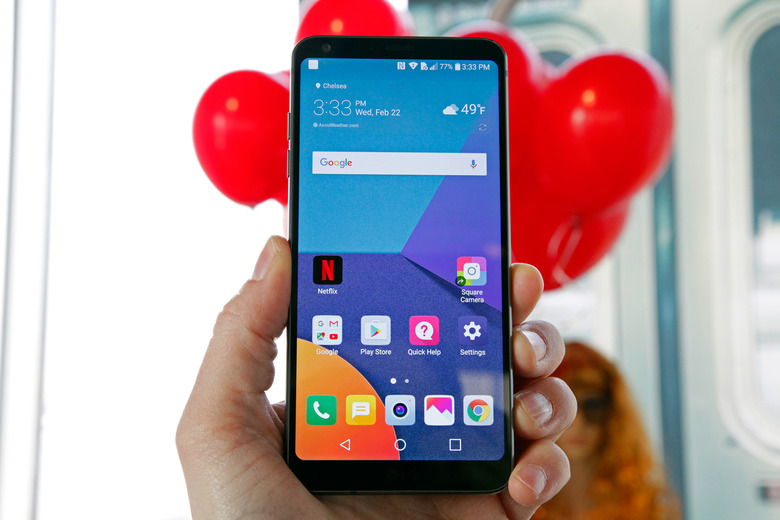LG G6 Hands-On: 42 Days At The Top
I can't see the future, but I have been doing this long enough to know a thing or two. For example, I know a gorgeous new flagship smartphone when I see one, and there's absolutely no question that the LG G6 is a gorgeous flagship smartphone. Inside and out, the all-new G6 is an impressive feat of engineering, packing a huge 5.7-inch Quad HD+ display with an 18:9 aspect ratio into a phone that measures 148.9 x 71.9 x 7.9 mm. To put that into perspective, the G6 stuffs a display that's larger than the 5.5-inch screen in the iPhone 7 Plus into a phone with a footprint that is barely bigger than the iPhone 7, which is equipped with a 4.7-inch display.
Of course, I have also been doing this long enough to know that some things are inevitable. As impressive as the LG G6 design is, and as nifty as its new features might be, this phone will be living on borrowed time from the moment it's released.
At the time of this writing, neither LG nor Samsung had announced release dates for their upcoming new flagship smartphones. That said, recent leaks from trustworthy sources suggest that LG plans to release the LG G6 on Friday, March 10, and Samsung plans to release the new Galaxy S8 and Galaxy S8+ on Friday, April 21st. When the LG G6 is released on March 10th, it will undoubtedly be the best Android smartphone the world has ever seen. Sadly, the G6 will be dethroned just 42 days later when the Galaxy S8 and Galaxy S8+ are released in late April.
That gives LG exactly 42 days at the top before the phone is steamrolled by Samsung. As impressive as the LG G6 is, we already know that the phone will be no match for the Galaxy S8, or for the marketing behemoth behind it.

LG unveiled its next-generation G6 flagship phone on Sunday during a press conference at the Mobile World Congress trade show in Barcelona, Spain. The G6 is the first flagship phone of 2017 from a top global smartphone vendor, and it raises the bar in every way. The new phone also gives us a preview of what we can expect from other top global smartphone vendors this year — namely, a big, beautiful display stuffed into a smartphone that is much smaller than the phablets of years past.
In 2017, phone makers have finally managed to shrink down the bezels that surround smartphone screens so that the large displays people love can fit into phones people can actually use with one hand. The best phones in the world are phablets, after all, but it'll be nice to my phone in my jeans pocket once again.
In the case of the G6, the display is a stunning 5.7-inch Quad HD+ screen that LG calls a "FullVision" display. It has an 18:9 aspect ration which is the new norm in 2017 according to rumors surrounding other flagship smartphones set to hit the market this year, and it might just be the most stunning LCD display ever used in a smartphone. The clarity is incredible, the colors are bold and vivid, and the contrast is as close to perfect as I've seen.
While 18:9 might become the industry standard this year, another important piece of the G6 puzzle is anything but standard in 2017: The processor.
LG knew it needed to beat Samsung to market this year, and that meant compromising in a few key areas. Chief among them is the Qualcomm Snapdragon 821 processor that powers the G6. It's a fantastic mobile processor, as we all know, but the upcoming Snapdragon 835 is better in every way. It's smaller, it's more efficient, and it's more powerful than its predecessor. Unfortunately, it wasn't available when LG began developing the G6, and the company knew that delaying the phone and launching alongside the Galaxy S8 simply was not an option.
In case you're wondering, yes, the Snapdragon 835 is indeed the next-generation chipset that will power the US version of Samsung's upcoming Galaxy S8 and Galaxy S8+.

On the plus side, LG worked with Qualcomm to narrow the gap a bit between the Snapdragon 821 and the upcoming new Snapdragon 835. For example, LG's G6 supports both Dolby Vision and HDR 10, and it also features next-generation electronic image stabilization and smooth zoom during 4K video recording that isn't found on any other phone with an 821 chip.
The G6 features a dual 13-megapixel rear camera setup that enables 2x optical zoom just like Apple's iPhone 7 Plus. I didn't get a chance to thoroughly test it during the time I spent with the phone last week, but the camera app is stuffed with new features that I can't wait to explore when I review the phone.
Other highlights from the G6's specs list include a large 3,300 mAh battery that supports Quick Charge 3.0 and wireless charging. The battery is embedded and is no longer removable like the one in last year's LG G5, but the reason for the change is sound: LG's G6 is IP68 rated for water resistance. That means the phone can survive being submerged under 1.5 meters of water for up to 30 minutes, and it puts the G6 on par with flagship phones from Apple and Samsung.

We'll have plenty more to share in our upcoming full review of the LG G6. In the meantime, pricing and a release date should be announced very soon by LG's carrier partners in the US. While nothing is official yet, you can expect the phone to be released on March 10th after a brief preorder period, and it should be priced in line with the iPhone 7 and Galaxy S7. That's right — despite its huge 5.7-inch screen, the phone should be competitive with where the smaller iPhone 7 and Galaxy S7 were at launch.
Here are the full LG G6 specs as provided by LG:
- Chipset: Qualcomm® Snapdragon™ 821 Processor
- Display: 5.7-inch 18:9 QHD+ FullVision Display (2880 x 1440 / 564ppi)
- Memory: 4GB LPDDR4 RAM / 32GB UFS 2.0 ROM / MicroSD (up to 2TB)
- Camera:
- Front 5MP Wide (F2.2 / 100°)
- Rear Dual: 13MP Wide (F2.4 / 125°) / 13MP Standard OIS 2.0 (F1.8 / 71°)
- Battery: 3,300mAh (embedded)
- Operating System: Android 7.0 Nougat
- Size: 148.9 x 71.9 x 7.9mm
- Weight: 163g
- Network: LTE-A 3 Band CA
- Connectivity: Wi-Fi 802.11 a, b, g, n, ac / Bluetooth 4.2 BLE / NFC / USB Type-C 2.0 (3.1 compatible)
- Colors: Black / Platinum
- Other: Water and Dust Resistant / Fingerprint Sensor / UX 6.0 / Dolby Vision™ / HDR10 / Qualcomm Quick Charge™ 3.0
